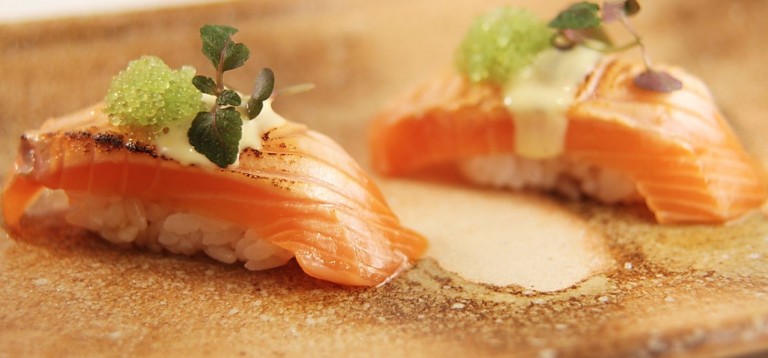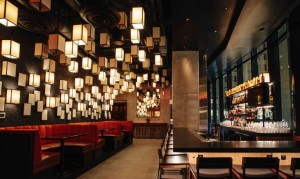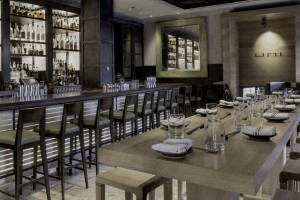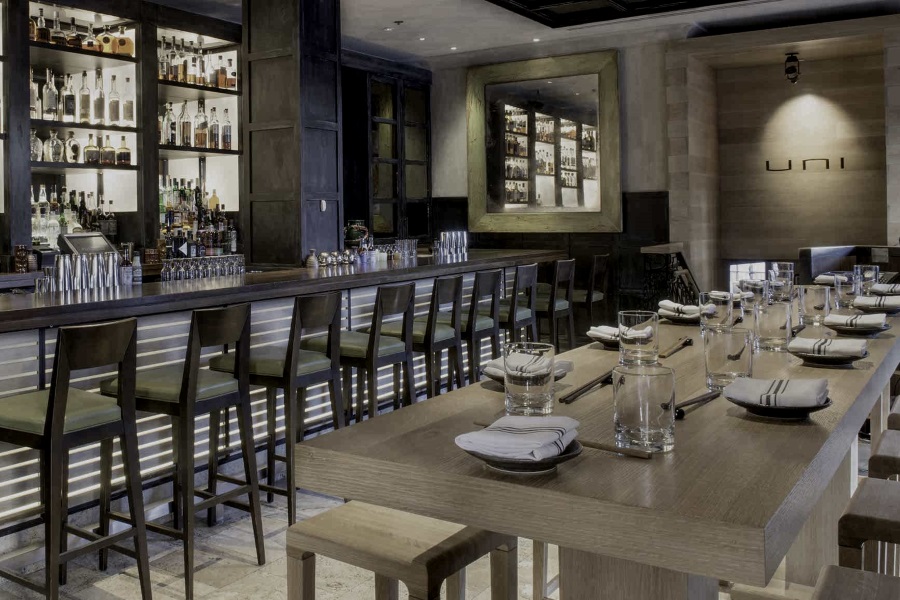Japanese-People Approved Best Japanese Restaurants in Boston
College town Boston has no shortage of Japanese restaurants, from affordable college budget spots to something reserved for let’s-go-there-when-family-is-in-town ultra luxury omakase sushi. It doesn’t hurt that Boston is one of the largest cities that offers some of the freshest seafood in the United States (New England clam chowder, anyone?). From Boston Harbor to Harvard Square, let’s find the best Japanese food that Beantown has to offer!
- Cafe Sushi (Sushi)
- O Ya (Sushi)
- Toraya (Sushi)
- Shiki (Kaiseki)
- Hokkaido Ramen Santouka (Ramen)
- Yume Wo Katare (Ramen)
- Pabu Boston (Izakaya)
- UNI (Izakaya)
- Ittoku (Izakaya)
- Sakanaya (Fish Market)
1. Cafe Sushi
Sushi

Omakase starts at $80 per person, Cafe Sushi is one of the best omakase deals around! It’s not just the fresh sushi that makes this place famous; it’s the creativity. Chef Seizi Imura prepares each course with carefully dressed (don’t understand what this means), so you can enjoy the flavor of seasonal seafood at the best. A case in point, the red snapper is lightly seared to maximize the ‘butteriness’ of the fish, topped with cranberry sauce and a yuzu dusting. Boston Magazine picked Cafe Sushi as one of the best of Boston!

What to order:
Omakase is reasonable, but you can also sample Cafe Sushi’s best with the “Sushi Dinner” which comes with 9 pieces of assorted nigiri and a roll. Their vegetarian sushi is equally delicious! Who doesn’t want wasabi oil and truffle salt on their sushi?
2. O Ya
Sushi
Creativity and tradition don’t go hand in hand when it comes to sushi. Either a restaurant declares itself a “No California roll” zone, or its menu is full of rolls drenched in spicy mayo and eel sauce. Not at O Ya. You won’t get a California roll nor eel sauce, but rest assured, everything will be a luxurious treat! Chefs Tim and Nancy Cushman created this upscale sushi kaiseki restaurant. For example, how would you like your oyster prepared? How about lightly frittered and topped with squid ink foams? Or sweet Hokkaido uni crowned with blood orange, as an added touch of perfect acidity. That’s just the tip of the iceberg.

What to order:
Start saving now and go grand with Grand Omakase for $285 with an additional $150 for the beverage pairing. It’ll be a journey to Japan without the long 16 hour flight.
3. Toraya
Sushi
If you are on a first date at Toraya, and you both feel that you had an awesome time, there may be a chance for you two in the future. Because Toraya is not a sexy, dimly lit, trendy restaurant where you order artisanal cocktails and wagyu beef topped with caviar and truffles. Rather, it’s a brightly florescent lit sushi place in Arlington. Nothing about this place is sexy…. except for the fresh sushi, of course. Think of Toraya as a basic, reliable, genuine Japanese restaurant that is kind to your wallet. After all, isn’t that all you ask from your partner, too?
What to order:
Chirashi comes with more fish than you can name. Also their pork and fish katsu (panko breaded and deep fried cutlets) will satisfy your hunger like no other.
4.Shiki
Kaiseki
Shiki is under the radar of many, but ask Japanese residents in Boston and they’ll all mention Shiki as one of their favorite and “authentic” restaurants. Specifically, they’ll probably mention Shiki’s Kaiseki lunch menu. It’s a beautiful assortment of typical dishes such as tempura, udon and sashimi presented on a tray. It’s a mom-and-pop type of restaurant, except, here, the mom and pop are nice Japanese people who want to feed you things like grilled eggplant miso glaze and cubed tuna with mountain yam.
What to order:
Lunch kaiseki plates starts at $13, but many Japanese folks are going for the $23 “Matsu” kaiseki lunch, which comes with pressed sushi and a mini savory egg custard. Pressed sushi, oshizushi, is their speciality, which means your choice of cured mackerel, shrimp or eel is pressed with sushi rice and placed in a box. It travels better, as it’s perfectly suited for take out!
5. Hokkaido Ramen Santouka
Ramen


What to order:
Signature shio tonkotsu ramen is light and perfectly salty. It is topped with Japanese pickled plum to cut some fat from the pork bone broth. Spicy tonkotsu dipping style ramen is great for the cold Boston winter as well as for the rest of the year!
6. Yume Wo Katare
Ramen

What to order:
Basically, there’s one thing on the menu. All you need to ask yourself is more or less pork or noodle? There’s even a kids’ size available for children under 12. Cash only!
7. Pabu Boston
Izakaya


What to order:
Although everything looks upscale at Pabu, the restaurant is meant to be enjoyed “izakaya style.” So get a bit of everything and share with the table. Musts are: Ken’s roll with shrimp tempura and spicy tuna, Michael’s roll with blue fin fatty tuna, uni and ikura. If you are visiting for a special occasion, try Pabu’s omakase, it’s a grand tasting course of both hot and cold dishes, including plenty of sushi!
8. UNI
Izakaya


What to order:
Since uni is in the restaurant’s name, as you can imagine, there are plenty of uni, (sea urchin) dishes. Start with the Smoked Uni Spoon or Crispy Riceball with uni creme and have toro nigiri with uni powder dusted on them.
9. Ittoku
Izakaya
At Ittoku, you can experience a little bit of the downtown Tokyo izakaya experience in Boston. Ittoku is a fun and no frills restaurant with a menu full of small dishes to choose from. So bring friends and plan to share, because that’s what the izakaya experience is about: sharing food with friends and family and having a good time. There are many kinds of sake to choose from that go well with the typical izakaya dishes such as yakitori, sashimi and agedashi tofu. There are also house made chinmi, which literally means “rare taste,” that you won’t see at other Japanese restaurants. Try shiokara, raw squid fermented in their own innards, or takowasa, raw octopus cured in wasabi sauce. They go well with dry sake!
What to order:
The Izakaya meal must start with yakitori, grilled chicken meat on skewers. Some are more exotic than others, like bonjiri and harami, but don’t worry! There’s a graphic explanation on the menu to explain where it comes from. If you like fish, try broiled salmon belly (harasu) or yellowtail collar. They are Japanese favorites. Not feeling too adventurous? Get chicken wings and meatballs. They are Japanese favorites as well!
10. Sakanaya
Fish Market


What to order:
Whatever you see on the daily recommendation board and have it as nigiri, in a bowl or protein style, aka sashimi. Next time when you are planning a sushi party, call them, as they have awesome customizable sushi plates!
*All prices, numbers and menu descriptions mentioned in the article are from the time of this article’s publishing. So keep in mind, they may have changed since then.

